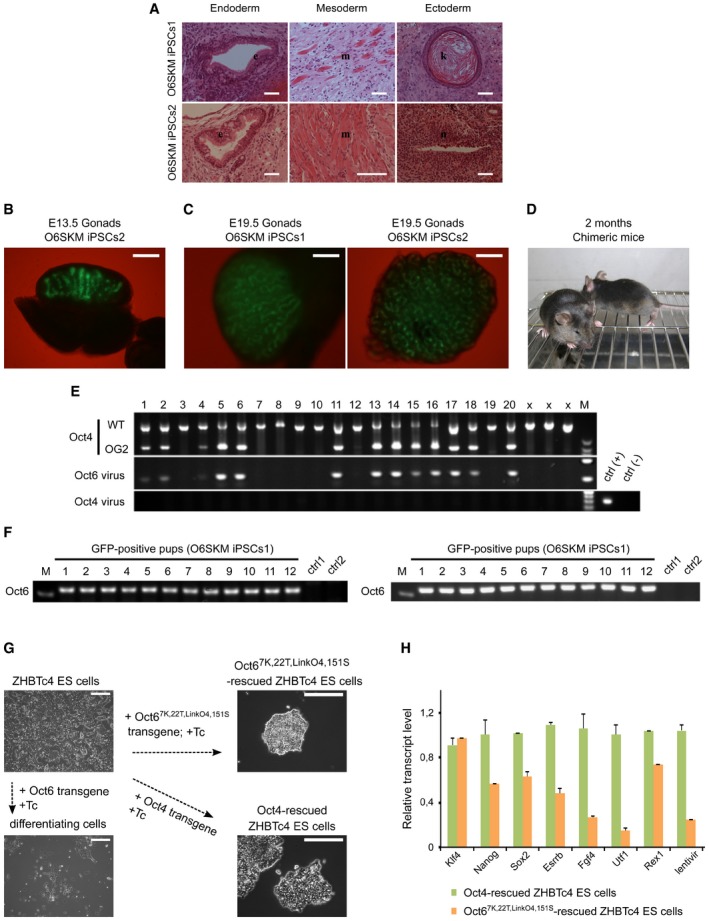Sections of teratomas stained 4 weeks after subcutaneous injection of nude mice with iPSCs generated using O6SKM factors. Teratomas contain all three embryonic germ layers: endoderm (epithelium, e), mesoderm (muscle, m), and ectoderm (keratin, k, and neural epithelium with rosettes, n). Scale bars: 100 μm.
Oct4‐GFP‐positive germ cells were detected in the male fetal gonads of E13.5 embryos, confirming the germline contribution of O6SKM iPSCs. Scale bars: 100 μm.
Oct4‐GFP‐positive germ cells were detected in the gonads of E19.5 pups. Scale bars: 250 μm.
Representative example of two chimeric mice generated by O6SKM iPSCs. The agouti coat color originated from O6SKM iPSCs. These two chimeras represent mice numbers 13 and 14 (see genotyping results below).
PCR analysis of DNA isolated from the tails of chimeric mice was performed in order to demonstrate germline contribution by the presence of Oct4‐GFP (OG2) and Oct6 viral transgenes. Contamination by Oct4 virus was also excluded by PCR analysis; M stands for DNA marker, ctrl (+) refers to positive iPSC control, and ctrl (−) refers to negative MEF control. Samples 1–14 refer to O6SKM iPSCs2; samples 15–20 refer to O6SKM iPSCs1. Samples labeled with “X” are not relevant to this study.
Genotyping of Oct4‐GFP‐positive pups after germline transmission confirmed the presence of Oct6 viral transgene. M stands for DNA marker. Two GFP‐negative mice were used as negative controls (ctrl1 and ctrl2).
The Oct4 complementation assay using ZHBTc4 embryonic stem cells was performed as was described previously
68. Oct4 and engineered Oct6 transgenes were used to rescue the ES cells upon loss of endogenous Oct4 after the addition of doxycycline (Tc, tetracycline antibiotics) and thus maintain pluripotency. Scale bars: 250 μm.
The relative transcript levels of selected pluripotency markers and also of relative lentiviral levels of WT Oct4 and engineered Oct6 were analyzed by qRT–PCR. The mean values are shown with the standard deviation as error bars (n = 2).

